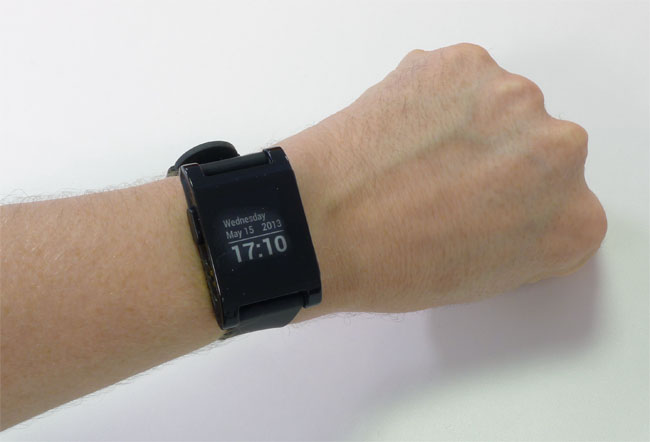This article is more than 1 year old
It's the software, stupid: Samsung Galaxy Gear smartwatch bags big apps
Armies of Evernote, RunKeeper, Path users summoned in latest wrist war
Put your mind at wrist: What are the tech specs?
The Gear has an 800MHz CPU, 512MB of RAM and 4GB of flash storage, but these specifications are arguably meaningless without an appreciation, through use, of what they mean for the device’s battery life and capacity for functionality, which will mainly be delivered by on-board apps.
No one wants to be recharging their watch every other day - consumer expectations are of weeks if not months or years of runtime between charges. The Gear’s use of Bluetooth 4.0’s Low Energy extensions will help here.
But the Gear does have one clear stand-out quality: tie-ins with a dozen third-party apps at launch. Some, such as the Vivino wine scanner app and the Atooma, Banjo, Path, Line and Pocket social apps are less well known, but RunKeeper and MyFitnessPal are hugely popular personal fitness apps, and Evernote is the number-one cloud-based note-keeping utility. All these will work with the Gear from day one.
This is an incredibly canny move on Samsung’s part. In the past, it would have been content simply to build in some app functionality itself and then sit back and wait for third-party software developers to validate its platform by supporting it through their programs. Build it and they will come. Or not.
This is certainly how Apple would have done it, and it’s how all the other smartwatch makers - established brands and startup alike, including Qualcomm - have approached the market. They have left to other people the subtle evangelisation of their platforms through the simple presence of a large number of popular, useful applications.
Pebble is something of an exception in that it had support for third-party apps RunKeeper and Freecaddie, a tool for golfers, from the start. People who use these apps regularly have an immediate and strong motivation to buy a Pebble smartwatch.

Pebble: friend to developers ... and runners and golfers
But Pebble hasn’t gone far enough. Samsung, on the other hand, steps straight in with a dozen apps and possible more in the pipeline. It knows punters won’t buy its smartwatch on the off-chance their favourite apps may work with it. So Samsung has smartly given those apps’ users a reason to buy. It has made them all potential Gear customers.
Smartwatches only shine when they come together with phone or tablet apps to present information in the most convenient way for a given situation. While jogging or cycling, say, it’s easier to glance at your wrist than carry your phone in your hand. Your phone can stay securely stowed. Ditto for running for a train or plane. Sitting in a theatre or a business meeting, likewise. When your hands are full, certainly.
Wrist-computers aren’t about simply replicating a phone’s display and that of a timepiece, but providing a more suitable read-out for circumstances when a phone - and certainly a tablet - screen is sub-optimal. This is what most smartwatch nay-sayers miss. They assume a smartwatch is just a watch that can also let you know you’ve had a call.
Those cynics are correct: a phone kept close by does this just as well. But there are many circumstances when grabbing your phone is not convenient, and that’s when smartwatches come into their own.
Of course, Samsung is planning to charge $299 - equivalent to £192, £230 with VAT added - for the Gear. The Pebble costs $150 (£115 including VAT). That’s reasonable, but Samsung’s price is high, especially since its device isn’t (yet) cross-platform; it is arguably over-specced, as much for marketing reasons as anything else, I suspect; and is no looker.
The Gear isn’t the luxury product most ordinary watches in that price band aspire to be. Neither is the Pebble, of course, but Pebble is pitching its product for its practicality not as a piece of bling, and it’s targeting a more enthusiastically techie audience than Samsung’s mainstream consumers. Only Casio’s Bluetooth G-Shock smartwatch comes close to the look of a "real" watch.
However, Casio doesn’t make the tools developers need to create apps for the gadget readily available. Neither does Samsung, though such tools must exist to have allowed its chosen partners to support the Gear. Pebble, on the other hand, provides a free, publicly available software development kit so anyone can get coding straight away.
Pebble’s approach paves the way for a greater number of third-party programs that can use its device, but so far it only appears to be appealing to amateur coders among its enthusiast community. It needs big sales volumes to demonstrate to big developers that it has a user-base they can target for big profits.
Samsung, by going direct to big-name application makers, will be able to give ordinary users much more functionality out of the box. That is going to win it customers far faster than its rivals have in the months after launch. ®
